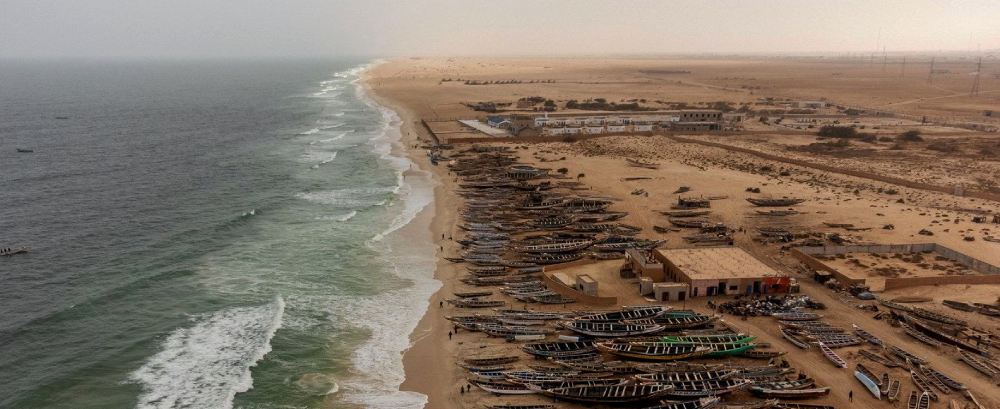
Mali
April 13, 2025
Niger
April 13, 2025Mauritania, a vast country in northwest Africa, is rich in mineral resources, which play a crucial role in its economy. The mining sector is one of the most important contributors to Mauritania’s GDP and export revenues. The country is known for its iron ore deposits, but it also has significant reserves of other minerals. Here’s an overview of the key mineral resources in Mauritania:
Key Mineral Resources
Iron Ore:
Overview: Iron ore is the most important mineral resource in Mauritania and the cornerstone of the country’s mining industry. Mauritania is one of the leading iron ore producers in Africa, and the iron ore sector is the largest contributor to the country’s export revenues.
Major Iron Ore Mines: The key iron ore mines in Mauritania are operated by the Société Nationale Industrielle et Minière (SNIM). The main mining areas include the Zouerate region, where the large Guelb El Rhein and Kedia d’Idjill mines are located.
Reserves: Mauritania’s iron ore reserves are extensive, and the country has the potential to remain a significant global player in the iron ore market for the foreseeable future.
Gold:
Overview: Gold is another important mineral resource in Mauritania. Gold mining has grown significantly in recent years, attracting substantial foreign investment.
Major Gold Mines: The Tasiast Gold Mine, operated by Kinross Gold Corporation, is one of the largest gold mines in Mauritania and among the top gold producers in Africa. Other gold mining areas include Guelb Moghrein and Tijirit.
Reserves: The gold reserves in Mauritania are considerable, with ongoing exploration activities suggesting potential for further discoveries and continued production.
Copper:
Overview: Mauritania has significant copper deposits, particularly in the Akjoujt region, where the Guelb Moghrein copper-gold mine is located. Copper mining is an important part of the country’s mineral sector.
Reserves: The copper reserves in Mauritania are substantial, with potential for further exploration and development.
Phosphates:
Overview: Mauritania has known phosphate deposits, particularly in the Bofal-Loubeira region in the southwestern part of the country. Phosphate is a key mineral for agriculture.
Reserves: The phosphate reserves in Mauritania are significant, with potential for development to support both domestic agriculture and export markets.
Gypsum:
Overview: Gypsum deposits are found in various parts of Mauritania, particularly in the coastal areas. Gypsum is an important industrial mineral used in construction.
Reserves: The gypsum reserves in Mauritania are adequate to support local construction needs and some export potential.
Uranium:
Overview: Mauritania has uranium deposits, particularly in the northern part of the country. Uranium exploration has been ongoing, although it is not yet a fully developed sector.
Reserves: The uranium reserves in Mauritania are still being explored, with the potential for future development.
Oil and Natural Gas:
Overview: In addition to solid minerals, Mauritania has offshore oil and natural gas reserves. The Chinguetti oil field, although now in decline, was once a significant producer, and new exploration activities are ongoing in the offshore blocks.
Reserves: The oil and natural gas reserves are promising, with potential for further exploration and development to boost Mauritania’s energy sector.
Quartz:
Overview: Quartz deposits are found in Mauritania and are used in various industrial applications.
Reserves: The quartz reserves in Mauritania are moderate, with potential for development to support local industries.
Investment and Extraction Situation
- Iron Ore Mining Dominance: Iron ore mining dominates Mauritania’s mineral sector, with the country being a leading producer in Africa. The government, through SNIM, is focused on expanding production and improving infrastructure to support the sector’s growth. The Trans-Mauritanian Railway, which transports iron ore from the mines to the port of Nouadhibou, is crucial for the industry.
- Gold Mining Growth: Gold mining has seen significant growth in Mauritania, with international companies investing in exploration and production. The Tasiast Gold Mine is one of the most prominent projects, and the government is encouraging further exploration to diversify the mining sector.
- Emerging Sectors: While iron ore and gold are the most developed resources, other minerals like copper, phosphates, and gypsum are gaining attention. The government is promoting investment in these sectors to diversify the economy.
- Environmental and Social Impact: Mining activities in Mauritania must balance economic benefits with environmental and social impacts. Issues such as land degradation, water usage, and the impact on local communities are important considerations. The government is working on improving regulations to ensure sustainable mining practices.
- Infrastructure Challenges: Infrastructure development, particularly in transportation and energy, is crucial for the efficient extraction and export of mineral resources. The government and private sector are working together to improve infrastructure, which is essential for the growth of the mining sector.


